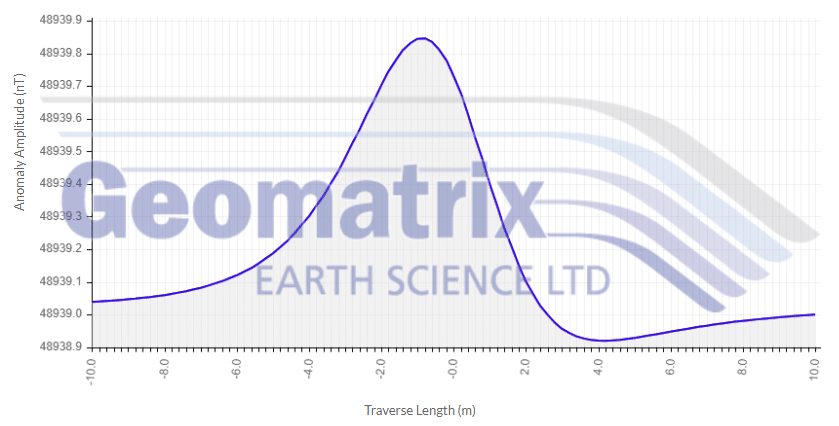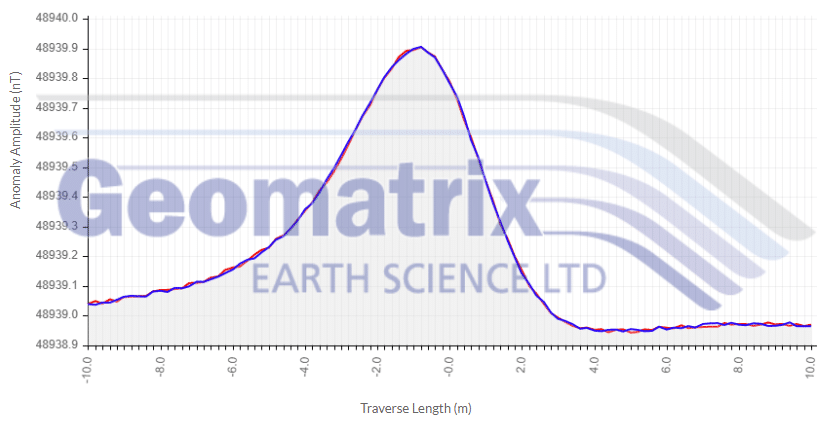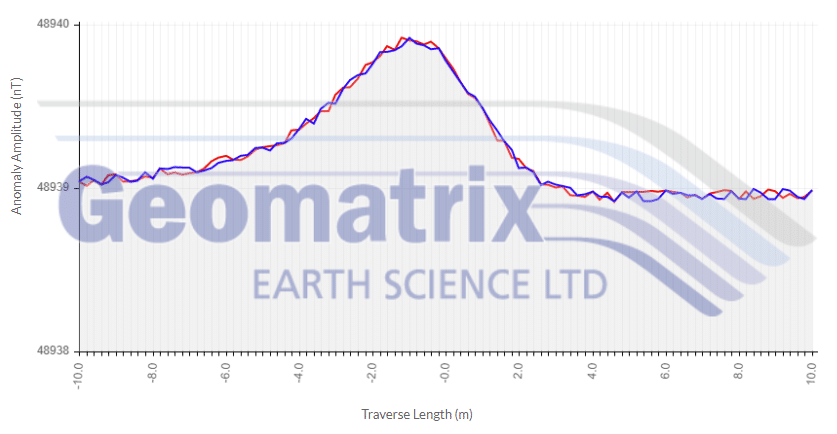The only difference between the standard and SX version is the sensitivity is 4pT/rt-Hz and 20 pT/rt-Hz respectively.
Here is an expected response with the magnetometer moving past a generic magnetic projectile:

In this case the amplitude is about 2nT in total from peak to peak. The feature itself is quite distinguishable. This is assuming there is no noise in the system. Here is what the data looks like with 4pT/rt-Hz noise:

You can see the general structure is still there but there is a little more wiggle on the trace that is associated with the noise of the system. Here is the data with 20 pT/rt-Hz noise:

Again, here the structure is generally there but the data looks quite a bit noisier. So for smaller targets or more subtle anomalies they can be obscured or missed entirely.
To understand this concept better, you can use the magnetic gradient tool developed by our partner in the UK, Geomatrix Earth Science.
